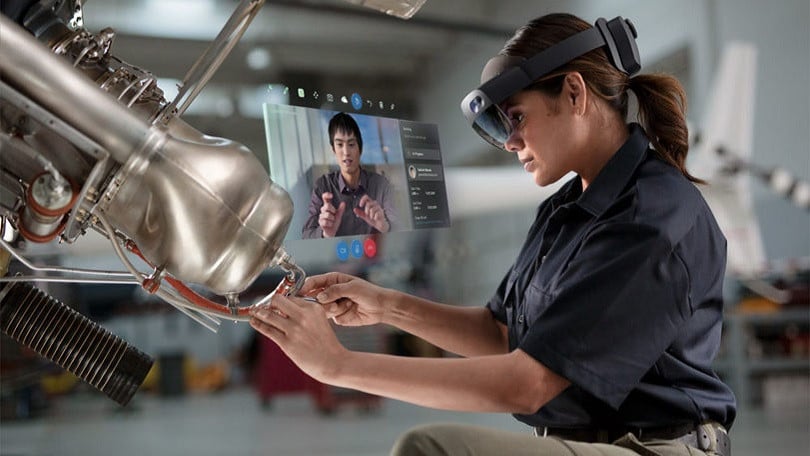
This post is adapted from ARtillery Intelligence’s latest report, Industrial AR: Benefits & Barriers. It includes some of its data and takeaways. More can be previewed here and subscribe for the full report.
Industrial AR is experiencing a slow climb as characterized in the figures we reported last week. This mostly results from slower than expected adoption, which in turn results from organizational inertia. Though industrial AR’s ROI is clear, prevailing resistance often overcomes it.
“When you have a new tech, the antibodies come out to stop it,” said former Lockheed Martin CIO David Smith at ARiA. “That’s true for your body… except when it’s not a disease but something that takes similar resources: a baby. So the trick is to explain it’s not cancer, it’s a baby.”
Adoption challenges are multi-dimensional but share this common trait of organizational resistance. That can happen on a system-wide basis or through inter-departmental friction as C-level change agents champion AR while ground-level stakeholders resist.
The Three P’s
This all leads to industrial AR’s biggest stumbling block: “pilot purgatory.” As its name suggests, this is when AR is adopted at the pilot stage, but never progresses to full deployment. It happens when AR fails to gain traction due to suboptimal planning, communication and implementation.
Fortunately, these challenges can be studied in a structured way as they map to three key organizational areas. These are what ARtillery Intelligence calls the Three P’s: People Products and Processes. They’re both the root of AR’s problems and the source of its solutions.
As we did in a recent white paper with Re’Flekt, let’s examine them one by one, including the challenges they raise and ways to overcome them.

Organizations are People
When devising ways to get past organizational hurdles, it’s important to customize value propositions to specific needs. With that thinking, it’s important to remember that organizations are made up of people. Their technology adoption likewise happens through people.
“Because organizations are people, new tech shouldn’t be sold as solving business problems but people problems,” said Re’Flekt CEO Wolfgang Stelzle. “The often-ignored reality is that people within organizations adopt technologies that benefit them individually, rather than the company.”
For example, metrics about AR’s operational efficiencies are not only misaligned with front-line worker’s goals but can be counterproductive. If a new tool can to do a job 2x faster, does that mean a worker has a 50 percent chance of keeping his or her job? This is the message they infer.
The takeaway is that messaging should be addressed to individuals in order to boost AR adoption. But before diving into those messaging strategies, who are the organizational personas that AR often touches? Identifying them and their AR adaptiveness is the first step.

Industrial Enterprise Personas
Executives and Business Leaders
AR Adoptiveness: High
Business leaders always look for operational efficiencies and bottom-line impact so AR’s ROI metrics naturally resonate.
Innovation Managers
AR Adoptiveness: High
Stakeholders within enterprise innovation hubs are tasked with bringing in new technology to improve operations, so AR likewise resonates with them.
Business Unit Managers
AR Adoptiveness: Neutral
Business unit managers oversee front-line workers. They are open to AR if it improves their departmental productivity and output.
IT Department
AR Adoptiveness: Low
IT professionals are risk-averse, as their job mandates. They don’t want to be responsible for data breaches and aren’t motivated to bring in new technology.
Front-Line Workers
AR Adoptiveness: Low
Front-line workers are AR’s end-users and biggest resistors, stemming from fear of technology, job
security and other factors explored further below.

Think Like a Marketer
With these personas in mind, targeted communication and education are key factors in enterprise AR success. And that communication is more about marketing than technology. Communication and education to proposed AR end-users should therefore follow the best-practices of marketing.
“Act like a marketer,” said Atheer’s Amar Dhaliwal at AWE Europe. “Porsche brands everything as ‘Tech Live Look.’ So every press release, every analysts briefing, they talk about the program. Internally, the posters and packaging… when glasses go out… everything is branded.”
To illustrate this principle further, we’ve examined the benefits AR can bring organizations in the form of reducing the loss of institutional knowledge. This resonates with executives, but the benefit can be flipped or spun in a different way to underscore its impact on front-line workers personally.
For example, in physically draining fields like energy and construction, the most experienced workers do the hardest jobs, such as climbing poles and fixing turbines. The viability of that work decreases with age, but AR creates comfort and flexibility by empowering them as remote experts.
Like in marketing, companies should standardize such messaging. Taking lessons from other areas of marketing and sales, the practice of “objection handling” can help win over workers. This practice, along with examples, are provided in the Re’Flekt case study later in this report.
See more details about this report or continue reading here. Also see the similar report that ARtillery Intelligence co-authored with Re’Flekt here.
For deeper XR data and intelligence, join ARtillery PRO and subscribe to the free AR Insider Weekly newsletter.
Disclosure: AR Insider has no financial stake in the companies mentioned in this post, nor received payment for its production. Disclosure and ethics policy can be seen here.
